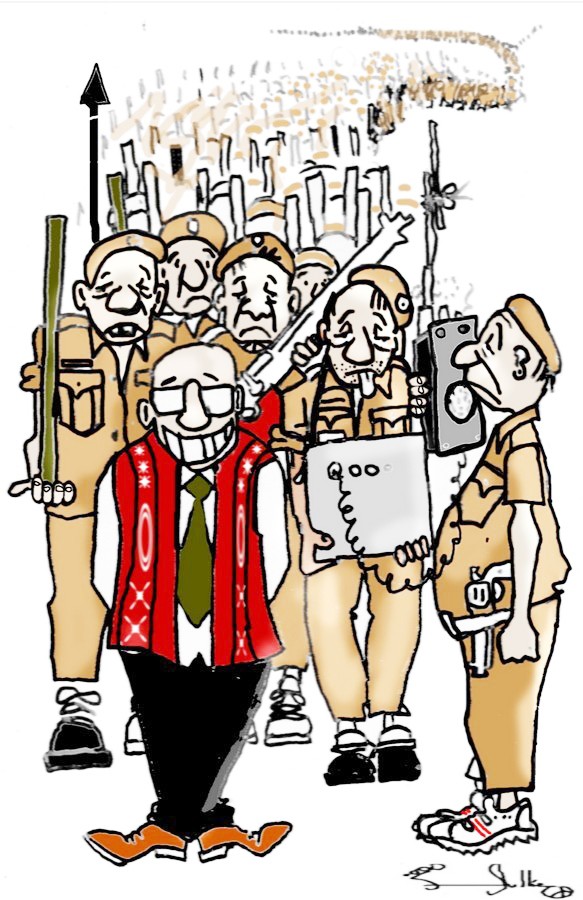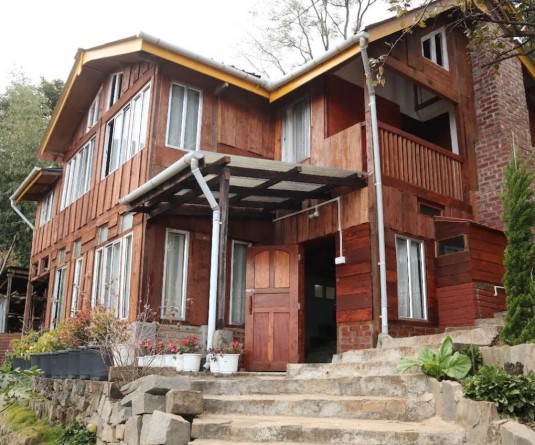
Imkong Walling
Dimapur | November 27
The Nagaland Police, in terms of numbers, has grown from strength to strength with the state government raising 15 Armed Battalions over the past 5 decades, in addition to the District Executive Forces (DEF). The state has the distinction of being ranked among states with the highest police-population ratio in the country, and also in the world. Alongside Manipur, Mizoram, Tripura, and the Union Territory of Andaman & Nicobar Islands, Nagaland has, on average, more than a thousand police personnel per lakh population. In comparison, the figure is miles from the national average of 174 personnel for a lakh of inhabitants.
(Information sourced from documents tabled in the Lok Sabha in March, 2012, tips the sanctioned strength of the state police at 24,226 personnel with zero percent vacancy. According to available records, Nagaland is the only state in India with all sanctioned posts filled.)
Based on statistics, a pleased state government beams with pride, basking in the invented glory of having established 73 police stations since 1963. The men and women of Nagaland Police have in fact brought home many a laurel. Yet amidst all the pride and glory, fringing on superficiality, comes the question, “Are numbers alone the prime factor to measure the competence of law enforcers in this time and age?” In short, what the state has achieved in numbers has had little or no corresponding effect on the finer aspect of policing, that is, capability - a lack in capability, not of the personnel, rather of resources, equipment and other wherewithal crucial to policing.
The list of ‘lacks’ (of resources and equipment) goes on. A number of policemen were interviewed at random by this reporter. The most common refrain from the personnel was, “We’re not happy with the resources at hand,” or the almost non-existent crime fighting paraphernalia.
Coming to crime and investigation, the method employed is still basic and traditional, limited to the time honoured practice of using guns, informers, and the personnel’s resourcefulness. Intelligence gathering has remained largely dependent on manual means with little electronic aid.
In a forensic age when DNA evidence has proven to be a foolproof crime-solving tool, the state police are only catching up on sourcing finger-prints. And here too, there is no computerised finger-prints database; so much for the much hyped ‘Police Modernisation Scheme’.
There is no known record of a crime solved using forensic aid, whereas the state boasts of a Forensic Science Laboratory (FSL) conveniently positioned in Dimapur. According to one of the policemen interviewed, the FSL has not been very helpful. The facility has been around for more than two decades. It is said to have a polygraph (also known as lie detector), but is seldom employed. There is no expertise to handle the device. It has the capability to collect finger-prints and foot-prints, the latter of which, one rarely comes across. Portrait Building System or the more commonly known sketch artists are almost unheard of in crime scene investigation here. “We’ve not come across an instance when a crime was solved using forensic aid,” said the policeman; a far cry in a place where even the customary post-mortem reports take no less than a week to get to the investigation officer’s table.
Then there is the bomb disposal squad. Known as the Bomb Detection and Disposal Squad (BDDS) and made up of 5-6 personnel, Nagaland has two such specialized units in Dimapur and Kohima. Its equipment though is limited to basic detection gadgets, and its members are sent for refresher courses on the subject.
The BDDS list of gadgets can be literally counted on finger tips, namely, hand held metal detector, mobile door frame metal detector and a bomb trailer. In a bomb situation, the trailer is used as a protective wall to contain and defuse an explosive device. One such trailer in Dimapur has never been used (fortunately for the BDDS personnel, who seldom wear protective suits) and is rusting away. In such inadequate circumstances, the police are compelled to rely heavily on experts from the army. “There have been instances when the BDDS members had bravely volunteered to defuse (bombs) themselves,” said one of the cops, quickly adding, “But we can’t take risks (with little or almost no technical expertise and equipment)”.
Further, there is no special communication tracking equipment. Vital to any crime fighting unit, phone tracking for Nagaland Police is limited to locating tower positions through assistance from telecom companies. In a place where abduction for ransom is commonplace, there have been many cases wherein investigators were constrained for a lack of tracking equipment.
Procuring one such device has been raised in several security coordination meetings even in the presence of the Minister in concern. The device is said to cost around Rs. 6 crores, a small sum for a government whose legislators spend crores contesting elections. Neighbours Assam, Manipur and Arunachal Pradesh already have the tracking apparatus.
The only accessible computerized technology is the National Crime Records Bureau (NCRB) – a comprehensive registry of crimes reported and documented, which is regularly updated. To directly feed the NCRB of data collected in Nagaland, the state police do not have the required software/programme, confided one veteran policeman, who wished to remain anonymous. The data has to be sent to the regional headquarters via the internet which is quite time consuming, said the seasoned cop, while adding, “The internet connection provided is too slow.” These are only a few of the ‘lacks’ in the department.
One mid-ranking officer, also speaking on condition of anonymity, summed up the intent of the headline above. “We don’t need so many people (personnel), it is high-time we have specialized units for specific situations and needs,” said the officer; or simply division of responsibility depending on the nature of the crime or case. The officer particularly cited the overuse of the Indian Reserve Battalions, primarily commando units, requisitioned even for normal law and order tasks.
Asked to comment on the standard of investigation followed here, the officer said that it is more or less the same as is in the metros. The difference observed is in terms of the resources at their disposal and to some extent the passion to persevere, the officer said, while adding that the personnel should be exposed to how investigation is carried out in the bigger cities. “Criminals are getting more cunning by the day, so we must upgrade our knowledge base, skills and resources.”






